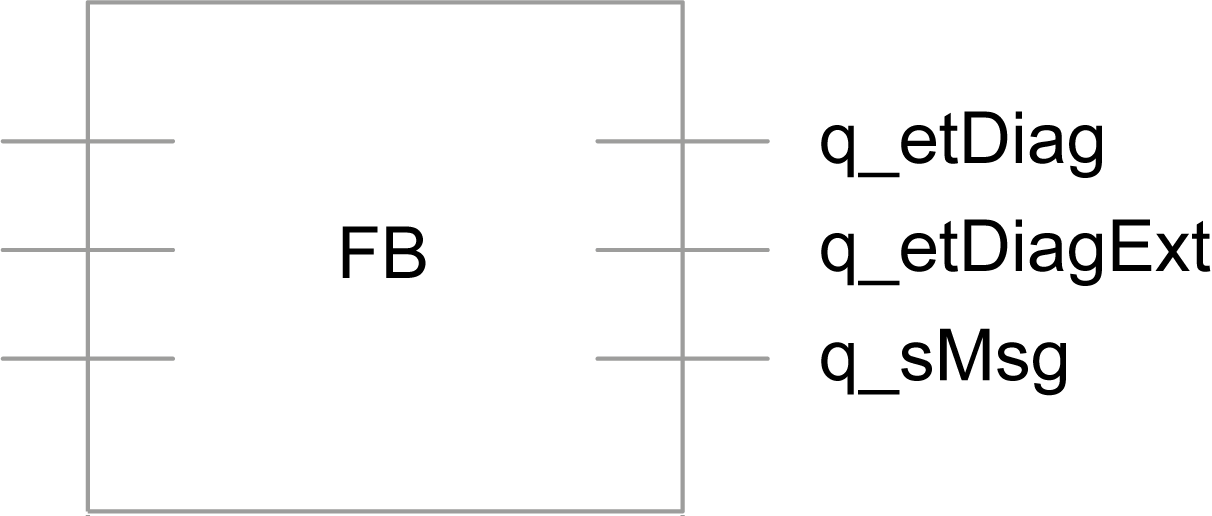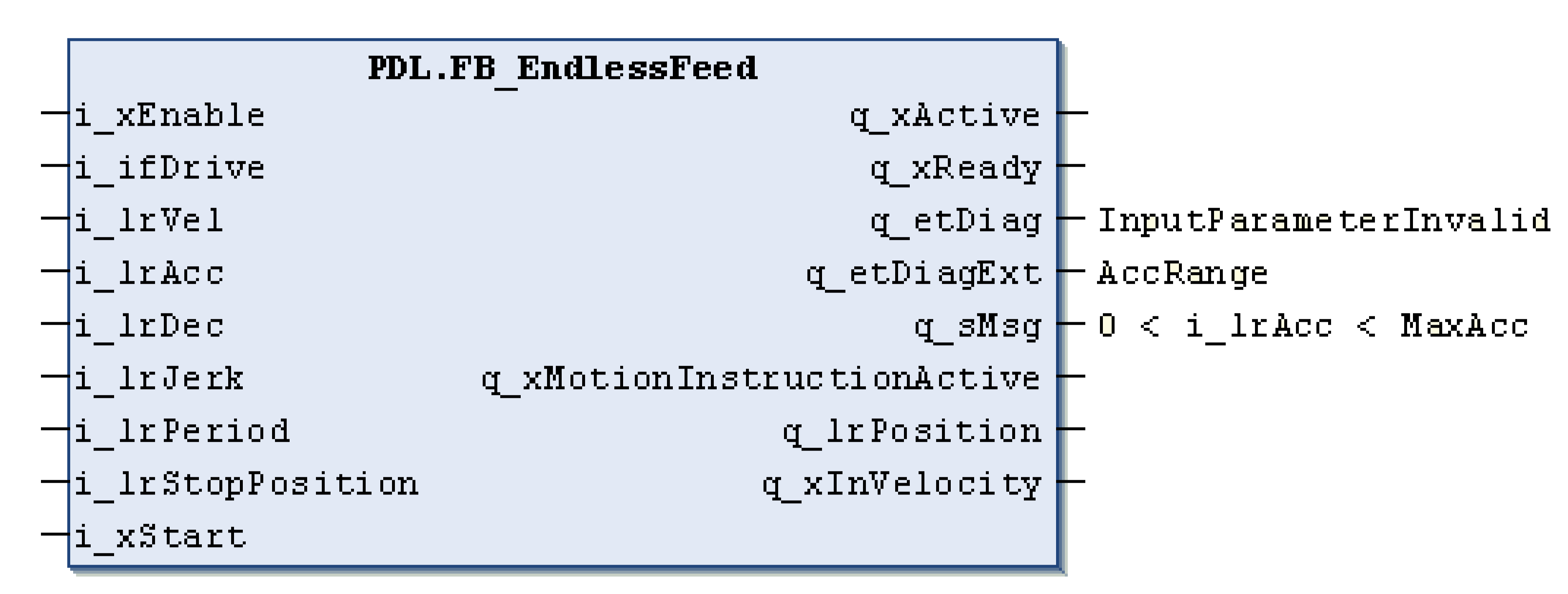Diagnostic Concept
Overview
PacDrive 3 provides a three-layer diagnostic concept for the libraries. This concept is valid for the Technology/Module libraries in the PacDrive 3 system (for example, the library PD_PacDrive.lib) and uses enumerations for diagnostic coding.
In principle, the diagnostic information has the following layers:
-
General information on the exception. No specific knowledge about the POU functionality is necessary.
-
POU-specific diagnostic and status messages (part 1): Detailed information on the source triggering the diagnostic or status messages.
-
POU-specific diagnostic and status messages (part 2): Detailed and dynamic information on the source triggering the diagnostic or status messages.
This information changes at runtime (for example, information about the condition of the input parameters). This diagnostic output is optional for the POUs.
The diagnostic concept for the PacDrive 3 family of libraries offers the following advantages:
-
Online display of the diagnostic messages
-
Detailed precision of diagnostic events via the availability of the diagnostic codes
-
Overview on the status or exceptional condition of a POU
-
Pertinent solutions to correct the causes for exceptional conditions
-
Enumerated diagnostic messages to facilitate multi-language support for HMI displays
Structure of the POU-Independent Information
The diagnostic output q_etDiag of the type GD.ET_Diag provides a library independent diagnostic information, for example InputParameterInvalid. The information can suggest a solution for the cause of the diagnostic.
Depending on the value of GD.ET_Diag, it is either a status description or an exception message. A value unequal GD.ET_Diag.Ok equates to an exception message.
The enumeration GD.ET_Diag and its elements are contained in the library PD_GlobalDiagnostics. It also contains a conversion function for the enumeration GD.ET_Diag.
The default namespace of the library PD_GlobalDiagnostics is: GD.The POUs, data structures, enumerations, and constants must be addressed using this namespace.
Structure of the POU-Specific Information
The diagnostic information of POUs is designed such that it can express both an exceptional condition or an internal condition (status) during the normal operation of the POU (for example: WaitForStart). The information (exceptional condition or status) is reported via the same output (q_etDiagExt). The output q_etDiag indicates whether a status or an exception is being reported.
Function Blocks
Function blocks have the three outputs q_etDiag, q_etDiagExt, and optional q_sMsg. The outputs are displayed grouped; that is, defined in the POU one after another.
Using schematic POU structure, the following is an example of a function block:

|
Output |
Data type |
Meaning |
|---|---|---|
|
q_etDiag |
GD.ET_Diag |
General statement on the diagnostic, for example
NOTE: If possible, GD.ET_Diag contains general formulated diagnostic codes (for example:
DriveConditionInvalid and InputParameterInvalid). Every enumeration element is not only represented by a name, it is also represented by a value. This value can then be used by the HMI so that the translation effort for a neutral language solution of the enumeration name remains maintainable.
|
|
q_etDiagExt |
ET_DiagExt |
Extended diagnostic information encoded into a value of the function or service performed within the POU. For example, q_etDiagExt provides the numeric value that serves as the index of a more detailed indication of the cause of the output and can be further used as an index into a multi-language set of display messages. |
|
q_sMsg |
STRING[80] |
Event triggered optional message that gives more detailed information on the diagnostic condition (for example, q_sMsg provides a dynamic string containing variable information about the diagnostic in English.
q_sMsg is modified during runtime. For example, by the exception During the normal operation of the POUs (q_etDiag=GD.ET_Diag.Ok), q_sMsg may provide information concerning the status (for example, the remaining sealing time). |
Diagnostic information example:

Functions
The functions also have the outputs q_etDiag, q_etDiagExt, and the optional q_sMsg.
The result of the function is provided by the direct return value in case of one result. If a function has more than one result, then the direct return value is a structure that contains the results.
Alternatively, the results of the function can be returned via several outputs; in this case the direct return value of the function is a BOOL value with a random value that cannot be interpreted.
Read the value q_etDiag to ensure that the function was called up successfully. The direct return value of the function does not contain that information.
An exception exists if the return value is <> GD.ET_Diag.Ok. The functions are processed completely in the call-up task, then their status can be evaluated and they report via q_etDiag and q_etDiagExt whether their processing was successful.